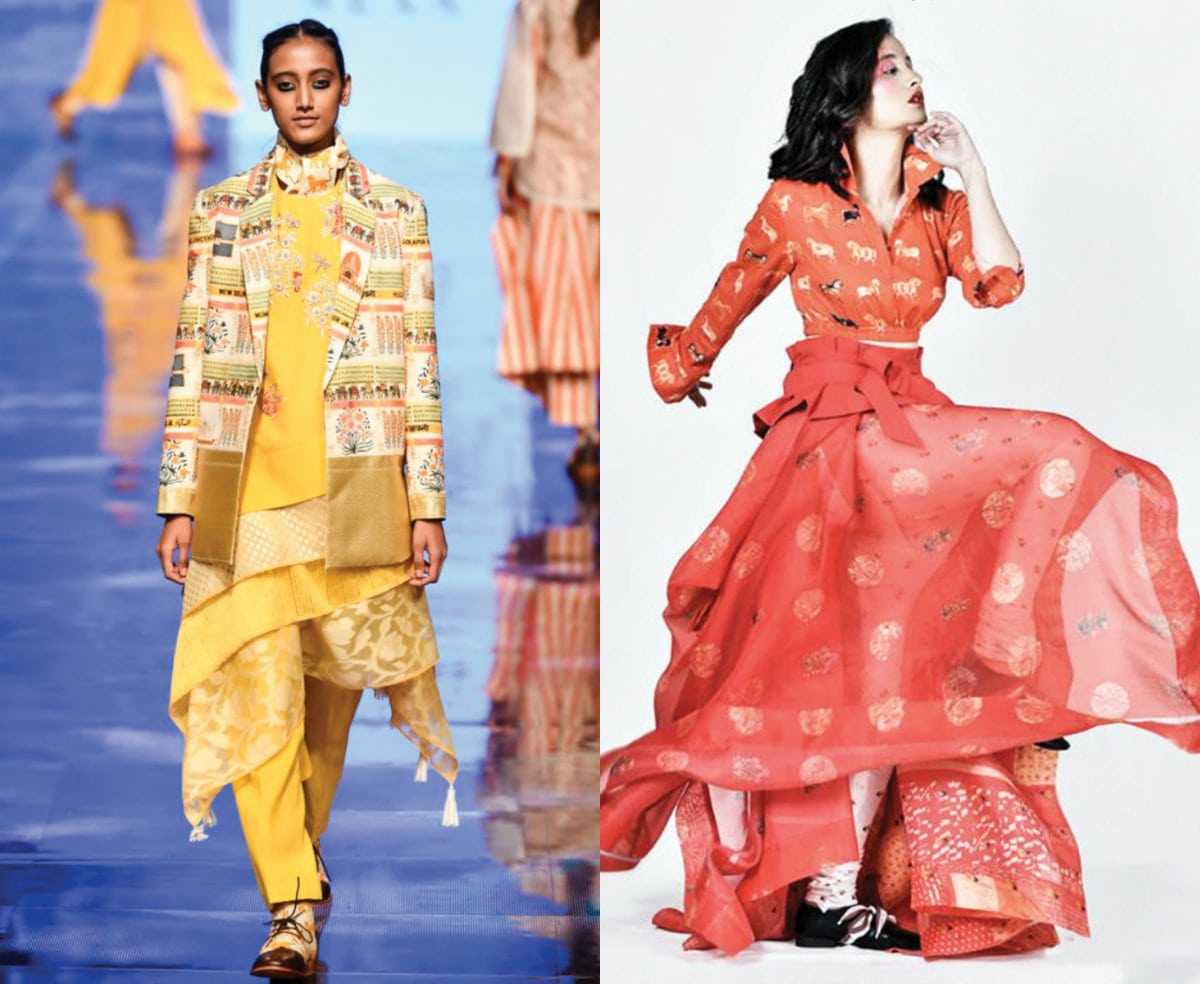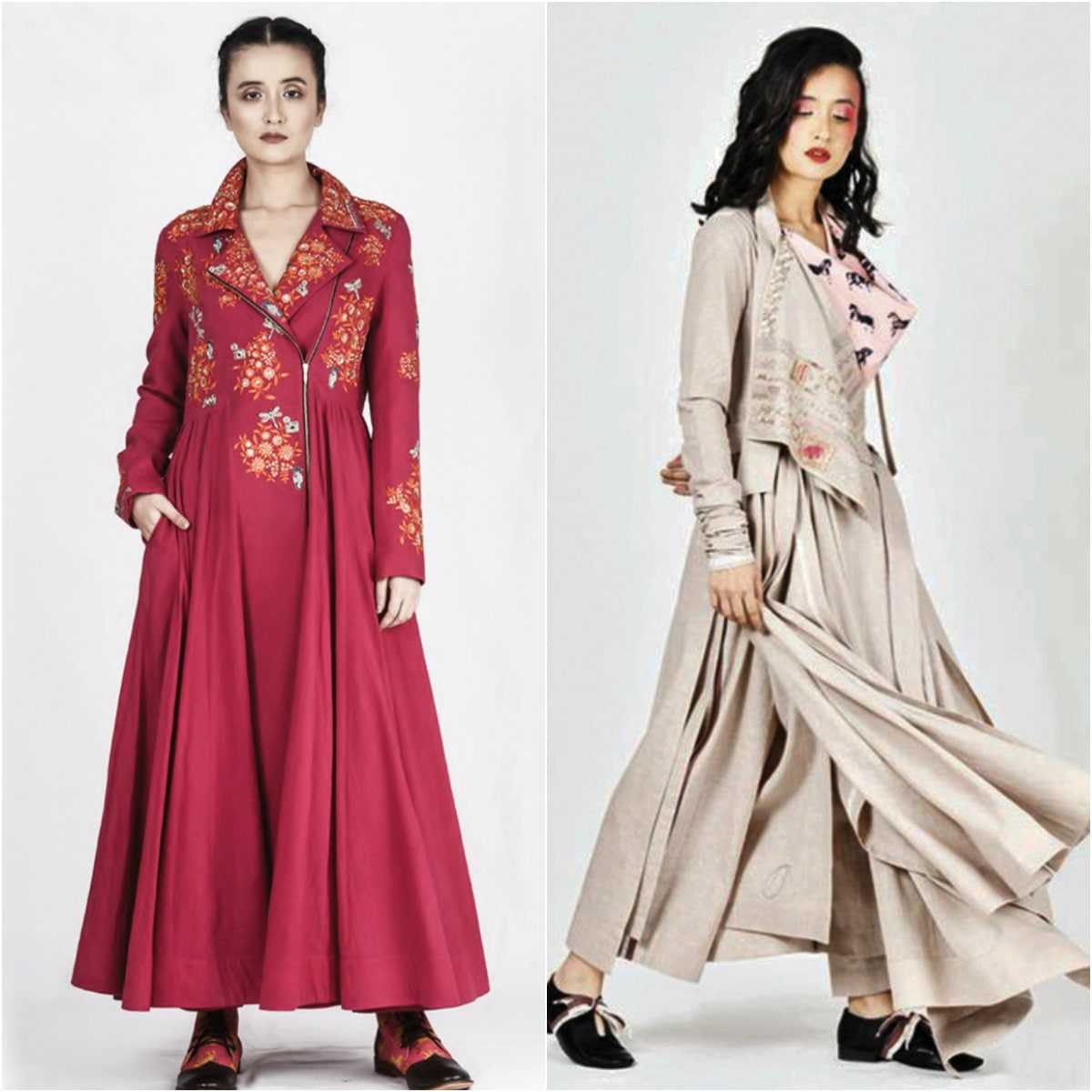
The stereotyping of Indian designers being synonymous with only Indian Indian fashion. ethnicwear is an age-old saga due to the association of the famed designers of India right from Sabyasachi to Manish Malhotra championing the segment. Yet, a crop of new designers are emerging who are now zealously breaking these stereotypes to create fashion that blurs the geographical boundaries and explores a design language that is international yet enjoys an essence of being Indian at heart, as they have managed to incorporate details that celebrate India’s prints, silhouettes, cuts or techniques, all the while keeping the creation ‘global’. One such label, that was created with the aim of making Indian fashion global is Jajaabor, the brainchild of husband and wife duo, Neelanjan Ghosh and Kanika Sachdev , which started its operations in 2017.
The founders are avid travellers who imbibe their travel stories in their clothing, as Jajaabor literally translates to a ‘nomad’ in Bengali. This was evident from their first presentation too on the commercial runway of Lakmé Fashion Week F/W 2018 which revolved around a collection called the ‘The Artful Lodger’, as a part of the 26th batch of Gen Next designers by INIFD and Lakmé Fashion Week. In a candid conversation with Apparel Resources India, Co-founder Neelanjan talks about Jajaabor and the way the label is working towards changing the perception of consumers towards Indian fashion.
“While walking on the streets of London, if a woman is wearing the traditional saree , she might feel out of place, but the people and onlookers really appreciate the traditional outfits that these women carry so effortlessly. This is the essence of Jajaabor, we want to create fashion that is affordable, has a story to tell, and most importantly, has an intrinsic value for the wearer,” says Neelanjan, as he adds, “We want our buyers to wear our creations and treasure them like the heirlooms that are passed on by the older generations and actually have a meaning, a trait which is lost today due to the advent of fast fashion and even faster buying cycles. It’s all about cherishing the memories and stories attached to the garment, making it timeless.” The label champions slow craft, as the founders believe that a major aspect of sustainability, apart from using conscious raw materials and systematic processes, is believing in abiding by the mantra, ‘Less is more’.
Fashion for a global village

Having experience in the fashion industry was a cherry on the cake for the husband-wife duo, as it gave them time to fathom and trap the pulse of the market easily. The world is a global village today, so fashion has to be approached in a very global way, and this is why their creations were made in a way that they can be worn anywhere in the world. Neelanjan and Kanika started translating their travel stories and concepts on to their creations through artworks, prints, graphics and embroidery details, all suited to the Indian consumer, who lives in a mainly tropical country where there are more hotter regions than colder counterparts.
Their recent collection championed the concept of ‘ Chai at Mughal Sarai Junction’ in order to remember the times gone by where families travelled by trains and took long bus rides to enjoy the journey rather than focusing on the destination.
Neelanjan reminisces about the role the junction played in his childhood, and also mentions the lack of knowledge of the current generation of travellers who believe in timetables and itineraries before they even start enjoying travel, making the process extremely monotonous. “The best part is, it is actually making a difference, people are really coming to us asking about the junction, and travelling there themselves. Our customers are keen on finding out about the next story, the next collection, and that is what the brand is all about,” says Neelanjan.
Their creations are rich with techniques as well, as they do a lot of prints and embroidery combinations, using both reactive prints and a lot of hand embroidery. They believe these are the timeless techniques of India. But to keep it affordable, they balance all these techniques by keeping a mix of niche such as Zardozi and affordable basic block prints.
Silhouettes with a twist

In order to create clothing which is comfortable for the Indian women to wear in every occasion, the label has come up with several silhouettes that are unconventional in nature and fit women of all sizes, while effortlessly amalgamating different design elements that blur the boundaries of ethnic and global fashion. “We want fashion for all, and since our inception, we have never charged anything for customisation to the maximum sizes; we want everyone to have fashion that is theirs, truly,” Neelanjan avers. He further states, “We try and innovate the classic silhouettes, not just Indian but silhouettes from all over the world. For instance, Japanese people are known for their kimonos, and similarly India is known for its angarakhas , and we have transformed the same to make them look very edgy, contemporary and fashion forward,” says Neelanjan. These angarakhas also showcase a range of prints and patterns in smaller motifs juxtaposed together to form a bigger picture that spotlights the particular concept to be outlined by that creation.
Catering to a great gap in the market, Jajaabor is creating silhouettes for travel, such as joggers, pants, in light khadi materials. As Neelanjan elucidates, “Women tend to feel cold in their surroundings, be it for travel or day-to-day work premises. So we have reinvented jackets such as bombers and puffers to create printed jackets that solve this purpose. One of the best sellers is our khadi biker jacket, a style which is usually synonymous with leather goods and materials. Our khadi biker jackets have been sensational, and this year we introduced our biker anarkali silhouette. People can wear it anywhere they want to. In our own way, we are trying these little twists to create fashion that is unique for all.”
On the materials front, the team sources basic fabrics from Delhi itself, such as khadi, chanderi, etc. They are also working with weavers in Banaras, to create new fabrics and sometimes they source the leftover fabrics that the weaver clusters have created previously. Talking about their latest development, Neelanjan says, “We are getting Jamdani developed on organza as an unconventional touch, and we are using the same for our trench coats and jackets.”
A time where every season, new designers are identified through platforms such as Lakmé Fashion Week, a strong design language has to be supported by a systematic back-end chain of processes. Talking about the importance of a good team, Neelanjan says, “A lot of aspiring designers and fashion students do not realise that it is not just about designing, it’s a lot more work. There are so many fires to put out and different departments to handle. At the core lies the production, which has to balance commercial value with design, as costing is the key. Having a team, or a partner who complements your skills, or makes up for the lack of some is the cherry on the cake, which is how Kanika and I work. She handles the finance department, client interaction and development of embroideries; I do patterns, prints and other design aspects, and then she finally translates it all to commercial fashion.”
The label is working vigorously to realise its aim of globalising the Indian design language in the domestic market and is also looking to start creating brand visibility across borders by next Fall.

Post a Comment